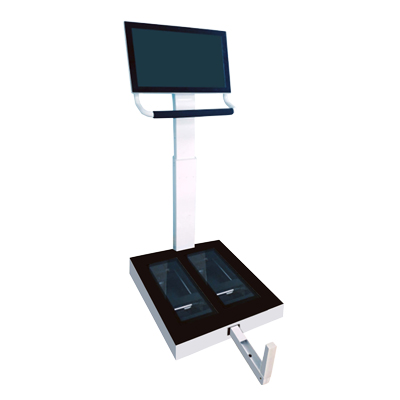In recent years, 3D foot scanners have frequently appeared in areas such as posture health, rehabilitation assessment, and custom orthopedic insole production, gradually becoming an important tool for intelligent foot evaluation.
Especially in the monitoring of children’s development, more and more parents are concerned: Can conditions like flat feet, in-toeing or out-toeing, and unstable walking in children be detected early and intervened with the help of 3D scanning?
Today, let’s talk about this question: Is a 3D foot scanner truly suitable for analyzing children’s foot shapes?
First, we must understand that the structure of children’s feet has significant plasticity during the growth process.
Most children under the age of three have varying degrees of physiological flat feet, which is due to the foot arch not yet being fully developed. As they grow older, the arch gradually forms, and gait becomes more stable. Therefore, the key to evaluating children’s foot shape lies in accuracy, objectivity, and dynamic tracking.

This is exactly where the advantage of the 3D foot scanner lies.
Compared to traditional ink footprint methods, static photographs, or plaster foot molds, 3D scanning technology uses laser or infrared scanners to quickly capture complete three-dimensional data of the foot. It generates 3D models containing multiple parameters such as arch height, heel tilt angle, forefoot width, foot length, and foot width. This not only improves the accuracy of the evaluation but also avoids errors caused by subjective judgment, making it more suitable for continuous tracking and comparison of children’s foot development.
So, is the 3D foot scanner truly suitable for children? The answer is yes, but there are a few important points to keep in mind.
First, the device must have a children’s mode. Children’s feet are smaller and more active. If the device cannot sensitively capture detailed foot shape data, or lacks corresponding algorithm models, data deviations can easily occur. Therefore, it is recommended to use professional equipment with a children’s foot database and adjustable adaptation functions.
Second, it is especially important to combine the scan with professional evaluation. The 3D scan provides “data,” not a “diagnosis.” Whether a child’s foot shape is normal or not also depends on a comprehensive assessment that includes bone age, posture, gait, muscle tone, and genetic factors. In other words, the scan is only the starting point; professional judgment is key.
Third, avoid blind intervention. Some parents get anxious when they see terms like “low arch” or “foot eversion” in the report and rush to customize orthopedic insoles. In fact, many minor foot shape deviations in children will naturally correct themselves as they grow. Only when a child experiences persistent pain, frequent falls, or obvious gait abnormalities should intervention be considered.
